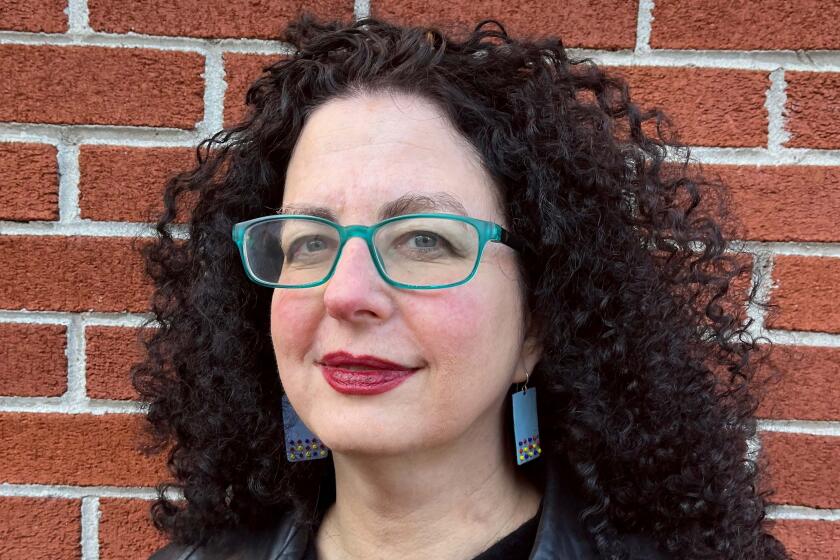The City of Joy by Dominique Lapierre; translated by Kathryn Spink (Doubleday: $17.95; 464 pp.)
Only a cynic or a sadist could have given it the unlikely name City of Joy, because this teeming, malodorous Calcutta slum, from which Dominique Lapierre’s new book takes its title, seems anything but joyful.
One’s initial reaction might be to require a warning label on this true saga: Yuppies and faint-of-heart, beware. But an in-depth examination quickly dispels such notions. Though this book is a descent into the Dantesque hell of Third World poverty that makes the works of Dickens and Zola look like children’s fairy tales, though it overflows with suffering, misery and tragedy, it is finally a positive, uplifting experience for the reader who perseveres. Indeed, it is a hopeful experience, redeemed by the grace of those who endure the futilities and deprivations of poverty with quiet dignity and gentle strength.
It is the apprehension of grace that has attracted Polish priest Stephan Kovalski to the City of Joy--the desire to be with the poor, to share their sufferings and their hope. “For me, each one of them wore that same face of Jesus Christ proclaiming to humanity from the heights of Golgotha all the pain but also all the hope of man rejected. That was the reason for my coming.”
Unlike most foreign missionaries, winning converts was not as important to Father Kovalski as being a simple presence. To the horror of the local Catholic priest, he took up residence in a tiny rat-infested hovel in the back streets of the slum. But his anonymity did not last for long. Very quickly his reputation as a holy man spread, and he was saying Mass for the tiny Christian community, visiting the sick and dying, and administering morphine injections to ease the pain of those in the advanced stages of leprosy.
To the pragmatically inclined, Kovalski’s simple approach might seem idealistic and ineffectual, but quite the opposite appears to be the case. Those with the humility and compassion to learn from the poor tend to be the most effective servants. Kovalski worked with the indigenous leaders of the community, founding a mutual aid group and eventually a medical clinic for lepers. But over the years, his most effective action continues to be that simple presence that gives hope to the poor because someone cares, and hope to the affluent because they see it is possible for at least one human being to be a Christian.
As inspiring as Stephan Kovalski’s story is, it is only half the tale. The other half is the story of the poor themselves, particularly the rickshaw puller, Hasari Pal.
It must be more than mere irony that Calcutta is named for Kali, the goddess of death, for she seems to devour the poor, her own sons and daughters. Like the thousands of landless peasants who stream into Calcutta each week, Hasari came in search of a job. Unlike most of them, however, he is able to eke out a marginal existence for himself and his family by literally selling his body and his blood.
Forced to sell his blood on a weekly basis to stave off starvation, Hasari is saved from being bled to death by a friend who secures him a job as a rickshaw puller--one of the “human horses” of Calcutta. Though he is beaten and robbed, jailed and harassed by the police, though he must pull up to four times his weight around the streets of Calcutta on bloody, unshod feet, he still considers himself lucky because he can now move his family off the bare pavement and into a tiny, vermin-infested lean-to.
But his good fortune does not last for long. Hasari soon contracts the “bloody spit”--tuberculosis. Yet his heroic sense of sacrifice continues until the very moment of his death. In order to assure a future for his daughter, Hasari Pal has sold his body for scientific purposes to obtain the exorbitant dowry required for her marriage.
Though this book lacks the eloquent descriptive style of some of his earlier works, Lapierre more than makes up for this with the intimate, fast-moving, first-person narrative mode that makes this true story read like a novel. One flaw, however, mars what is otherwise a singularly powerful experience. The epilogue is practically extraneous. In its effort to create a happy denouement, the last four pages practically undo what has been so skillfully done in the previous 400. “The living conditions of the inhabitants of the City of Joy have improved conspicuously since the events recorded in this book,” writes Lapierre as he goes on to outline the opening of new clinics, the digging of wells, and the involvement of European support groups.
While there is nothing wrong with upbeat endings, this one causes us to breathe an inappropriate sigh of relief. It seems to imply that once again Western technology and largess have come to the rescue, and that is not what this book is about. The life and witness of Father Stephan Kovalski are the very antithesis of that perspective. Like Mother Theresa, Dom Helder Camara and Dorothy Day, Kovalski calls us to consider a response to suffering that is at once more simple and much more difficult. His example challenges us to respond personally, to simplify our lives and seek the kingdom of God among the poor and dispossessed.
Finally, this book is not about happy endings any more than Greek tragedy is. On the contrary, it is about people who live lives that rarely end happily, who overcome adversity with grace, who endure suffering with dignity: “These scouraged, humiliated, starved people are truly indestructible. . . . Their zest for life, capacity for hope, their will to survive enables them to triumph over the maledictions of their karma.” Thus do their lives add to the sum total of human nobility lending hope and joy to us all.
More to Read
Sign up for our Book Club newsletter
Get the latest news, events and more from the Los Angeles Times Book Club, and help us get L.A. reading and talking.
You may occasionally receive promotional content from the Los Angeles Times.






